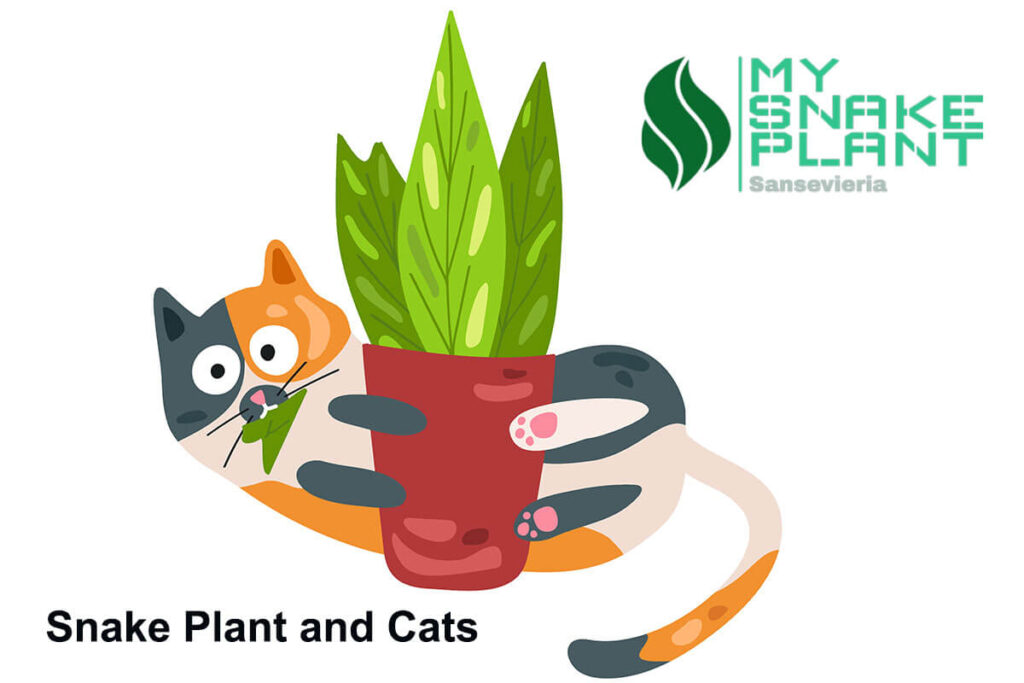Introduction to Snake Plants
Ever since the dawn of time, humans have always had a deep connection with nature. Plants are one of the more familiar faces of nature for people. Snake plants, also known as Sansevieria, are one of the popular houseplants appreciated for their hardiness and unique appearance. They can thrive in various conditions, making them a favorite choice for both novice and experienced gardeners. Although there is no doubt in human love for all that is green, mankind also has an interest in keeping animals close. Cats are one of the pets humans tend to keep around. I’m sure you can agree that cats are lovely animals to have around. If you are here, you are probably wondering if it’s safe to have Sansevieria while having a cat around the house. In this article, not only I will be answering the posed question, but I will also give you some general information you might find interesting or useful.
Common Names and Scientific Classification
Apart from being called the snake plant, Sansevieria is also known by several other names such as Golden Bird’s Nest, Mother-in-Law’s Tongue, Good Luck Plant, and Viper’s Bowstring Hemp. Everyone has a different name for it, my mother calls it Sun-so-re-ah. Weird, right? Scientifically, it’s classified as Sansevieria trifasciata. It has been categorized as one of the members of the Asparagaceae family, and it’s native to West Africa.
Popular Uses and Benefits
The snake plant is not just admired for its beauty; it’s also known for its many redeeming qualities. These qualities have been proven scientifically and, by no means, aren’t some random myths found on the internet.
- Filter Indoor Air: I’m not professional in this topic, but don’t all plants filter air by producing oxygen? Turns out Sansevieria is one the best options available to you for this matter; that is, it produces more oxygen than other houseplants; or at least, that’s what a study conducted by Harvard suggests.
- Beauty: Although one can argue beauty cannot be proven by science, which they are right of course, statistics have shown a great deal of people who ever had Sansevieria thought it was a more beautiful plant compared to the other options available to them. One thing is for certain though, it has a very unique appearance.
- Even More Filtering Indoor Air: I already did say it filters indoor air, but that was mainly about how Sansevieria can help you with CO2. Other than that, formaldehyde, benzene, toluene, and xylene are some of the pollutants Sansevieria can absorb. The increased amount of any of these pollutants in the air means less oxygen, which can cause dizziness and nausea.
- Nightshift: As you know, plants cannot photosynthesize in the absence of sunlight during the night, which means they cannot produce oxygen. However, Sansevieria has the ability to perform a certain type of photosynthesis called Crassulacean Acid Metabolism, which causes the plant to absorb CO2 even at night.
- Allergies: Th researchers at the University of Hawaii have found out that Sansevieria can be helpful in the case of allergies, causing less severe symptoms are stopping it entirely in some cases.
- Feng Shui: In feng shui, it is believed that pointy objects, such as our little friend here, are good against negative chi. It’s best they are placed in the southeastern, southern, or eastern corners of your place.
- Cheap: This is perhaps the most important benefit if we can call it that, of the Sansevieria plant: it is cheap to keep. It’s because it can live on its own and continue to grow even while being neglected, that is, being without water, sunlight, etc.
The Importance of Cat Enrichment with Plants
Cats are naturally curious creatures. When they’re indoors, their environment becomes their playground. This includes your furniture, spaces, and even plants. To keep them entertained and prevent them from causing mischief, many homeowners introduce cat-friendly plants. These plants not only beautify the space but also provide cats with a natural form of enrichment. Additionally, as I stated earlier in this article, cats tend to nibble on plants. Most plants are nutritious and can nourish and provide the cat with what its body needs.
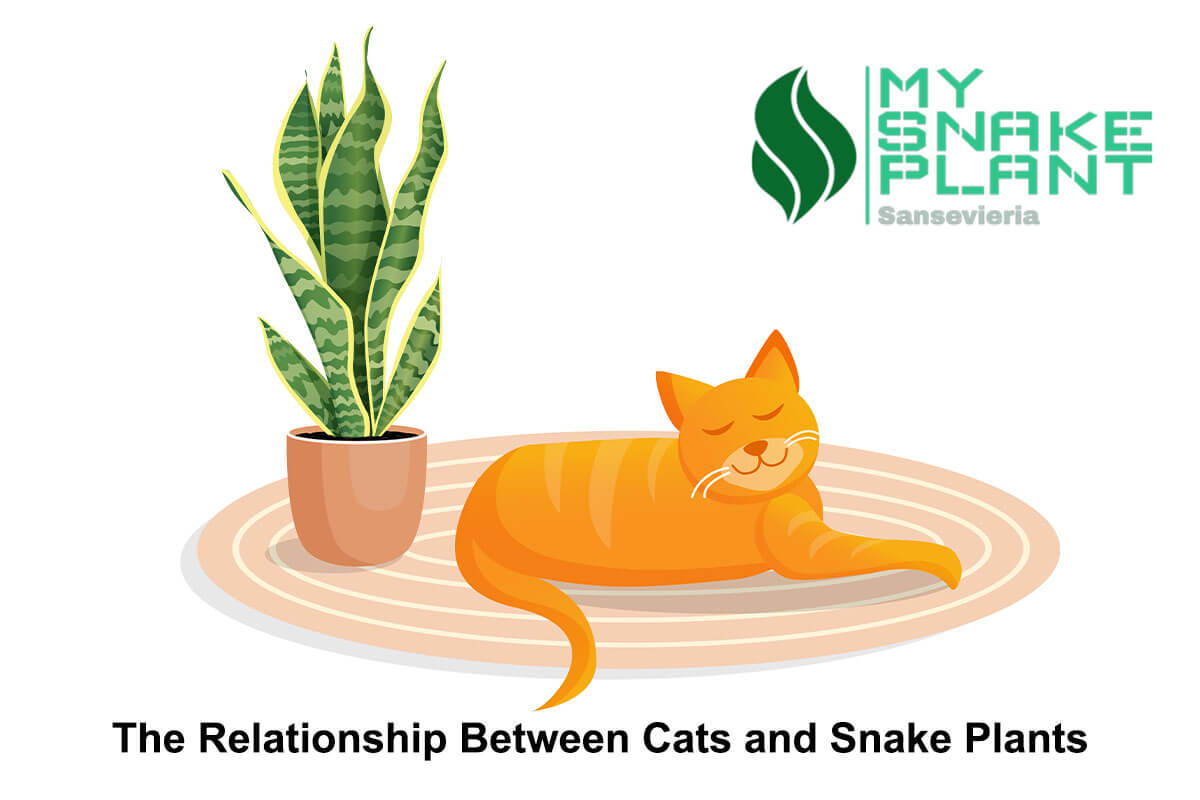
The Relationship Between Cats and Snake Plants
There can be a state of the relationship between virtually every two things, and there are three possible results: friendly, nothing, and hostile. Please pardon my humor, for what I mean to say is that while some foods or plants can be nutritious for cats, some can be toxic for them, which in our case, is Snake Plant.
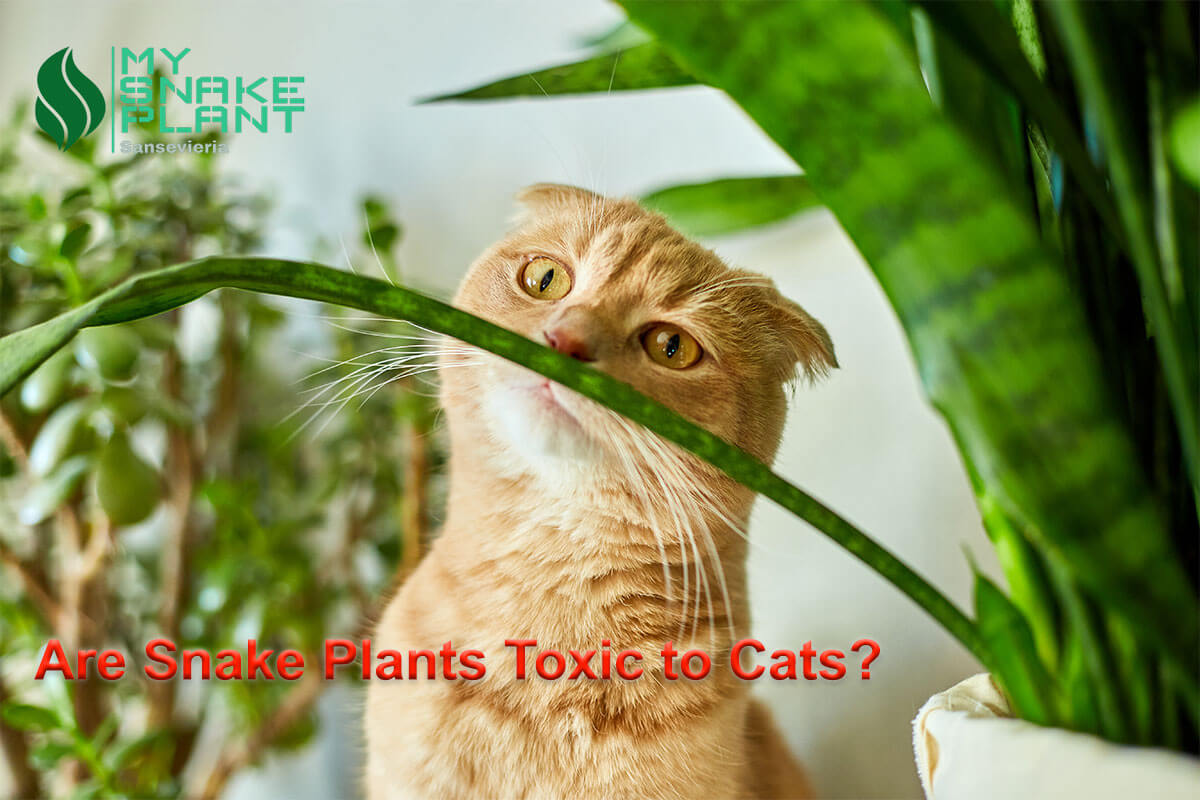
Are Snake Plants Toxic to Cats?
To give you a brief answer, yes, Snake plants are, unfortunately, toxic to cats. Cats, similar to humans, tend to eat green stuff to get many nutrients they need. The problem is, cats can’t exactly find out which plant to eat and which not to. When ingested, they can cause symptoms like nausea, vomiting, and diarrhea in our feline friends. According to ASCPA, a chemical compound present in Sansevieria called saponins, along with some minor ones, are responsible for the said problems.
Symptoms of Snake Plant Poisoning in Cats
As said before, if a cat has ingested parts of a snake plant, it may exhibit signs of poisoning such as:
- Nausea or Vomiting: When ingested, saponins cause inflammation in the gastrointestinal tract. There are some methods to help cats with nausea. These methods include administering oral antacids, anti-nausea medications, and intravenous fluid therapy. Unfortunately, none of these are available to you at home, so you will have to pay a visit to a vet.
- Diarrhea: When a poisonous compound enters the body through the digestive system, the body tried to get rid of it by vomiting. While many professionals suggest that a spoonful of water can help cats during this time, it is still best to visit a professional so your cat can receive professional medical care.
- Swollen Skin: Sansevieria can irritate skin quite easily. This is particularly true for cats. If a cat has eaten Sansevieria, the skin around the mouth should be swollen and easily noticeable.
Remember, it’s crucial to monitor your cat and consult a veterinarian if you suspect poisoning.
Treating Snake Plant Poisoning in Depth
Before I continue, please be warned that it’s always best to visit a veterinarian and consult them for advice. However, considering that it’s crucial to act upon the matter, you can try these steps.
- Inducing vomiting: One of the best methods of inducing vomiting is to feed the cat, using a syringe for getting it done easier, a solution of hydrogen peroxide of %3 purity.
- Providing fluids intravenously: Try to provide a spoonful of water every 30 minutes to your cat. It helps the cat’s body to deal with the poison better on its own, and it will help prevent some problems and symptoms that tend to occur after the initial symptoms.
- Using antihistamines: It is usually considered safe to use Benadryl. However, it should be administered in certain dosages. It is suggested that a ratio of 1 milligram per pound of body weight be employed.
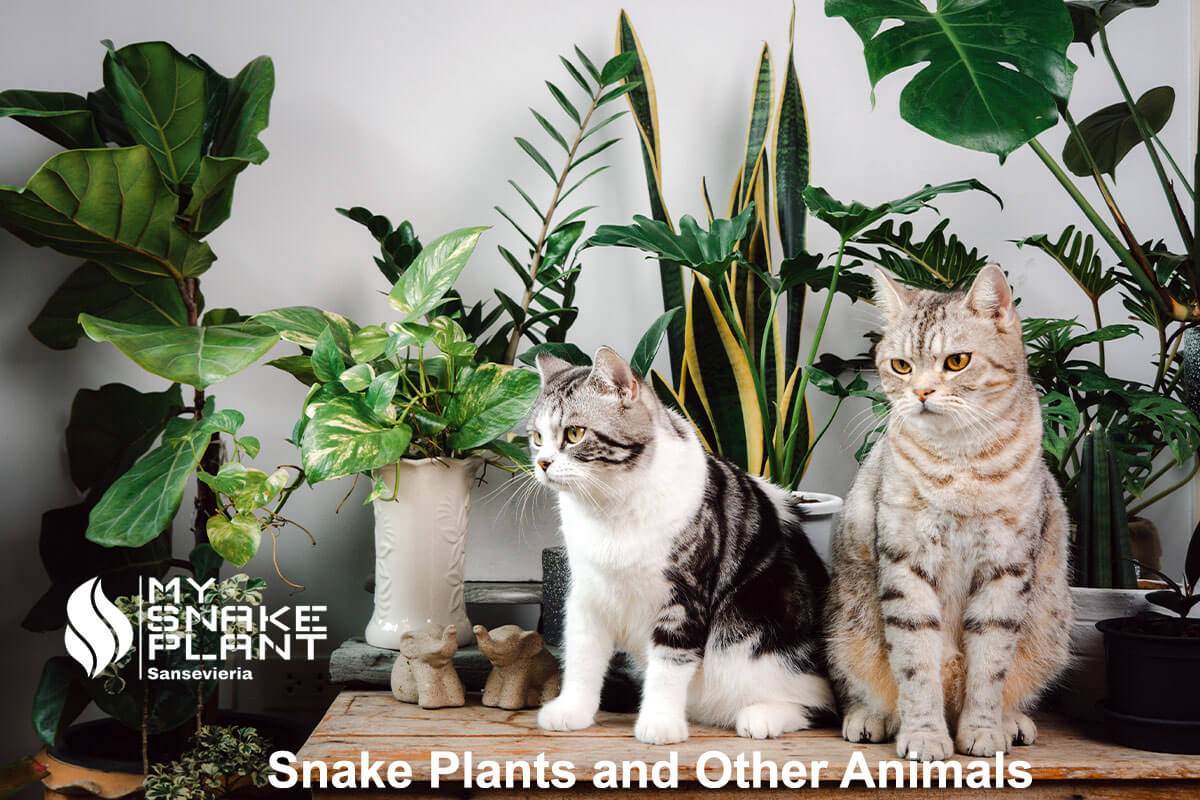
Snake Plants and Other Animals
While cats and dogs are commonly affected by snake plant toxicity, other small mammals like rabbits, hamsters, guinea pigs, and ferrets can also experience digestive issues if they chew on the plant. Since the cause of the problem is a certain chemical matter, it might also be the case with many other animals as well.
Why Are Snake Plants Toxic?
It seems that the main reason behind Sansevieria’s toxicity lies in a certain chemical. Of course, there are reasons to believe that other factors might be at work as well. But considering that there are other animals who can suffer similar symptoms as cats should, it suggests that this chemical certainly plays an important role.
The Role of Saponins
The primary toxic component in snake plants is saponins. These are natural chemicals found in various plants. In the case of snake plants, saponins can cause gastrointestinal upset in cats when ingested. However, it’s not limited to the said effects, as it can have neurological effects on the animal as well. Think of allergies and what happens when you eat something you have an allergy to.
Other Plants to Watch Out For
Saponins is not the only poisonous chemical for cats, nor its presence in plants is limited to only Sansevieria. The following plants are some of the options which you have to be careful about if you have a cat around the house.
- Aloe Vera
- Pothos
- Jades
- Philodendron
- Dieffenbachia
- Poinsettia Plants
- Lily
- Alocasia
These are just some of the toxic plants for cats. It’s suggested to consult a professional for advice.
Safety Precautions for Cat Owners
If you’d like to keep Sansevieria around you along with a cat at home, you need to exercise caution and take some safety measurements such as keeping the plant out of the reach of your cat or having knowledge on what you should do should your can manages to sneak up to your Snake Plant.
Keeping Snake Plants Out of Reach
If you’re a cat owner and love having snake plants in your home, it’s essential to keep them out of your cat’s reach. Simply telling them to not touch it won’t work on cats, believe me. Try placing them on high shelves or in rooms where your cat doesn’t have access. Remember that the place of your choosing should also be suitable for the plant as well. It means that, in the case of the Sansevieria plant, some places such as bathrooms with high humidity are out of the question.
Recognizing and Responding to Poisoning
Always be vigilant. If you notice your cat exhibiting symptoms of poisoning after being near a snake plant, contact your local veterinarian or an emergency poison hotline immediately. Remember, you should be able to easily tell from the skin because of irritability caused by Sansevieria.
Alternatives to Snake Plants for Cat Owners
Humans’ love for greenery knows no bounds, and if you can’t go to nature, bring nature to your home, right? Luckily for you, there are other plants that are safe for cats and pose no health risks and other kinds of problems for them or you.
Cat Grass as a Safe Alternative for Cats
One popular choice among cat owners is cat grass. This plant serves as a natural “toy” for cats. Chewing on cat grass can aid in a cat’s digestion and keep them occupied, preventing them from turning to potentially harmful plants like the snake plant. However, it doesn’t justify keeping plants poisonous to cats in their reach. You can use cat grass as a decoy, but you should still employ the necessary precautions to avoid any unpleasant outcome.
Cat-Safe Houseplants
For those who want to enjoy the beauty of houseplants without risking their cat’s health, there are several cat-safe alternatives to consider.
- Ponytail Palm: Requires minimal light and can be a great snake plant alternative.
- Air Plants: Perfect for terrarium enthusiasts and require little maintenance.
- Calathea Prayer Plant: Striped leaves similar to snake plants but safe for cats.
- Rattlesnake Plant: Not to be confused with snake plants, these are safe and require minimal attention.
- Calathea Zebra: A smaller Calathea variant with signature stripes.
- Hibiscus: Known for their bright blooms, they can be a vibrant addition to homes.
These plants are considered to be safe for cats, so you or your cat shouldn’t have any problems around them.
Finding the Perfect Plant for Cat Owners
In order to find out what the perfect plant for you and your cat is, take a close look at the lists of safe plants and plants to watch out for. If you can’t find something on the safe plants list that you like, you can always ask around for more options. There are many options out there, way more than I can count.
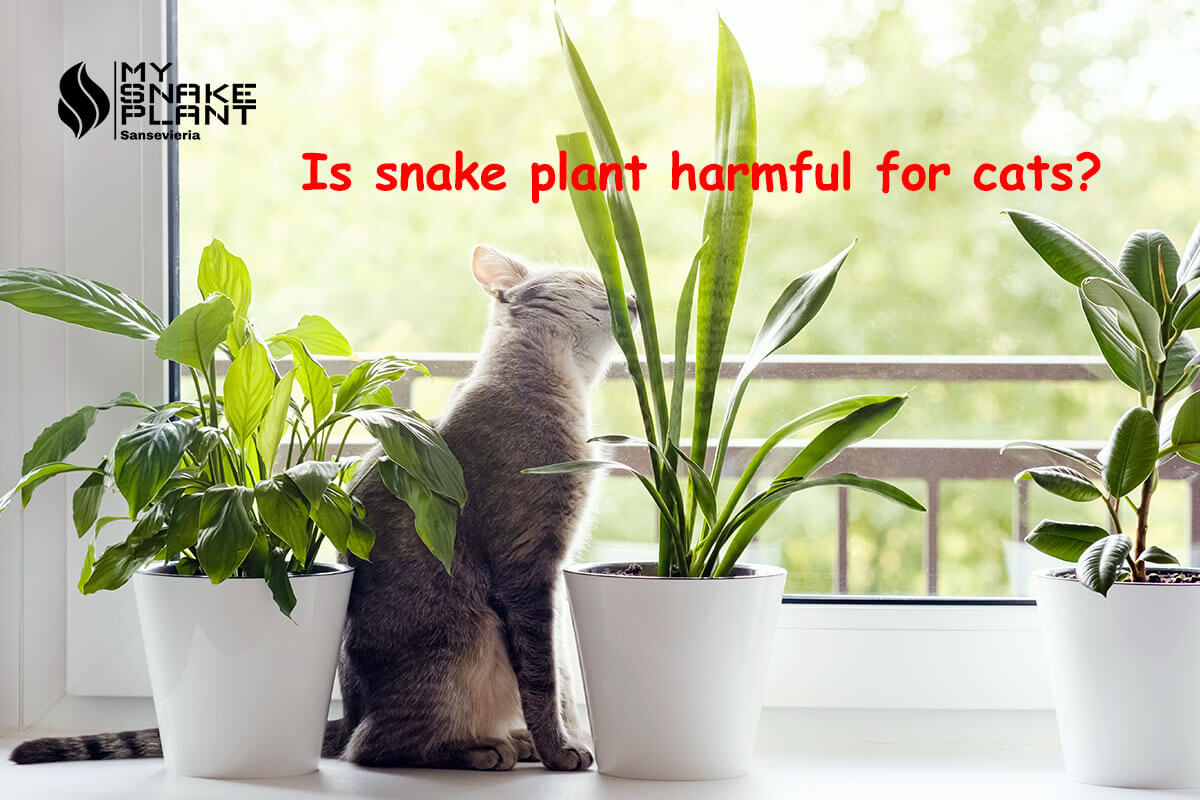
Conclusion: Is snake plant harmful for cats?
While snake plants offer numerous benefits, including air purification and aesthetic appeal, they pose a risk to our feline companions. If you’re a cat owner, it’s essential to be informed and take necessary precautions to ensure the safety of your beloved pet. Always prioritize your pet’s health and well-being, and when in doubt, consult with a veterinarian. If you must have both in your home, try to stay vigilant at all times to keep them both safe: your cat from being poisoned and your Sansevieria from being eaten!
FAQs
- Are all varieties of snake plants toxic to cats?
- Briefly answering, yes. As far as I know, there are 21 different varieties of snake plants and all of them contain saponins, which is the root of our, or rather the cat’s, problem in the first place.
- How long after ingestion will a cat show symptoms of poisoning?
- Symptoms can appear within a few hours of ingestion, although it can vary depending on many factors including but not limited to the amount of digested saponins. Although all varieties of snake plants have saponins, the amount they each have may vary. It’s essential to monitor your cat closely if you suspect they’ve consumed any part of a snake plant.
- Can snake plants harm other pets like dogs?
- Yes, snake plants are also toxic to dogs. It’s best to keep them away from all pets; although scientifically speaking, it’s mainly toxic to cats and dogs according to NIH. To be sure, consult a professional.
- Are there any treatments available for snake plant poisoning in cats?
- There’s no specific antidote for snake plant poisoning. Although there exists certain things you can do to help alleviate your cat’s health. However, supportive care from a veterinarian is what can best help manage the symptoms and ensure the cat’s recovery.
- How can I make my home safe for my cat while still enjoying houseplants?
- For starters, you can go for a cat-safe plant. Regularly check plant toxicity lists and be informed about the plants you bring into your home. If you want to have Sansevieria or any other toxic plant around, you should keep them out of reach.


